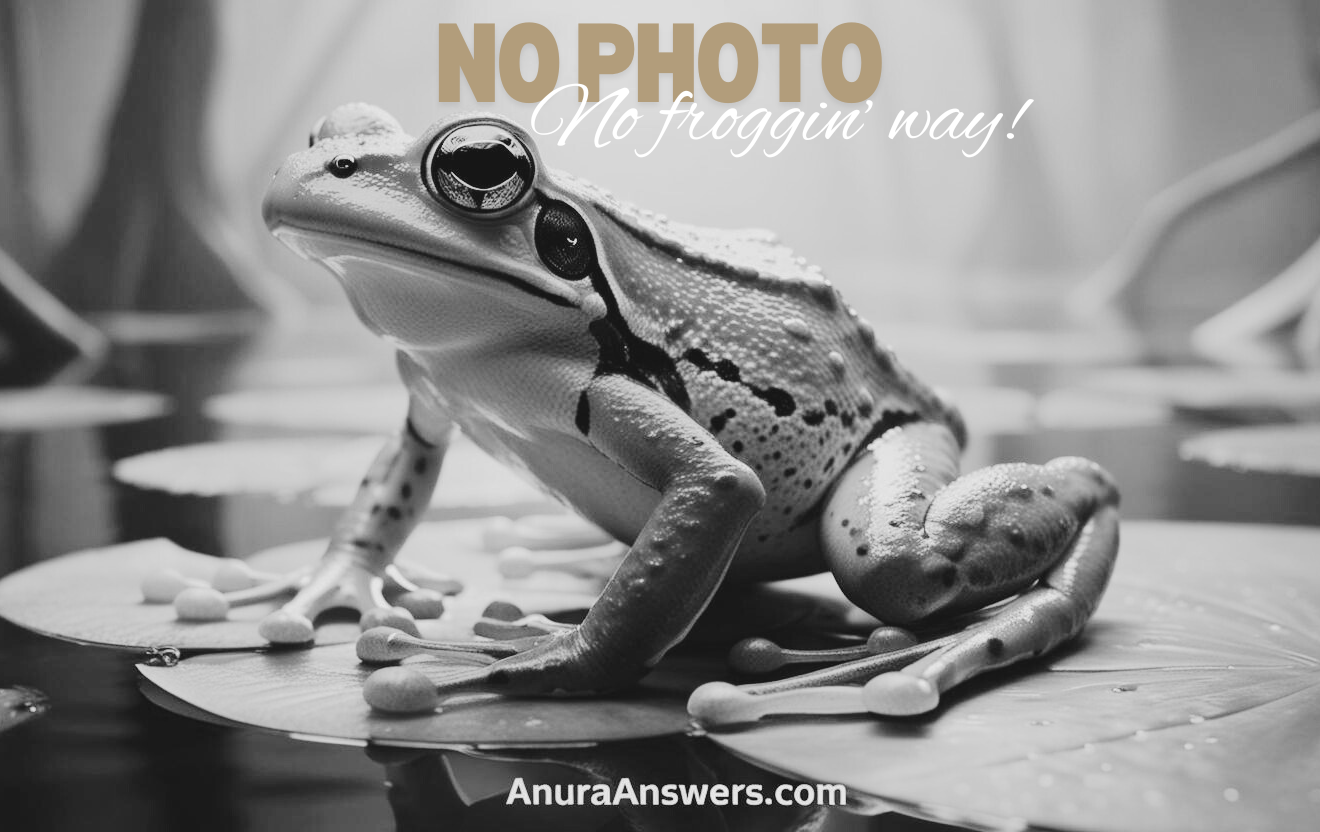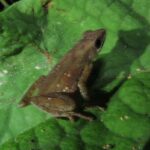- Meet Breviceps macrops: The Intriguing Desert Rain Frog of Southern Africa
- Taxonomy and Classification of Breviceps macrops
- Life Amidst Sand and Sea Spray: Habitat and Distribution
- A Charming Tiny Amphibian: Appearance and Adaptations
- A Nighttime Symphony: Behavior & Life Cycle
- The Tiny Gatekeepers: Ecological Role of Desert Rain Frogs
- Conservation Challenges: Protecting the Desert Rain Frog
- Beyond Cuteness: Cultural and Scientific Significance
- Championing the Plight of Breviceps macrops
Meet Breviceps macrops: The Intriguing Desert Rain Frog of Southern Africa#
Nestled beneath the shifting sands and sparse scrub vegetation along the misty coastal dunes of Namibia and South Africa lives one of the most endearing amphibians on the planet—the Desert Rain Frog (Breviceps macrops). With its uniquely expressive face and remarkable adaptation to arid environments, this fascinating species has captured the attention of wildlife enthusiasts around the globe. Often hailed for its adorable squeaky vocalizations, the Desert Rain Frog has inadvertently become an internet sensation, introducing countless people to the wonders—and fragility—of amphibian biodiversity.
Despite its newfound fame, few realize how specialized and vulnerable this tiny frog truly is. Beneath its modest size and charming appearance lie extraordinary evolutionary adaptations honed over millennia to survive in one of Earth’s harshest terrains. Let’s journey together into the world of Breviceps macrops, exploring its hidden existence, understanding its significance in biodiversity, and learning why this seemingly humble amphibian greatly deserves our tireless efforts in conservation.
Taxonomy and Classification of Breviceps macrops#
The Desert Rain Frog belongs to the amphibian family Brevicipitidae, a diverse group of small, terrestrial frogs commonly known as rain frogs. Within this group, the genus Breviceps comprises species specially adapted to life on the ground, far from permanent water sources. Officially classified as Breviceps macrops, the charmingly round-bodied frog is recognized scientifically by its distinctive traits, setting it apart from its many congener cousins competing with equivalent resilience across the African continent.
First described by the zoologist Leonhard Stejneger in 1907, Breviceps macrops stands clearly distinct from other members of its genus due to its notably larger eyes—hence its name ‘macrops,’ derived from Greek meaning “large-eyed”. Close relatives within its genus often share characteristics of terrestrial life, short limbs, and specialized burrowing patterns, yet none display quite the same charisma and physical uniqueness as this remarkable desert dweller.
Life Amidst Sand and Sea Spray: Habitat and Distribution#
True to its common name, the Desert Rain Frog inhabits regions that many amphibians would find inhospitable. A narrow stretch of coastal dunes along the shores of Namibia and northwestern South Africa constitutes the entirety of this charming frog’s home range. These coastal dunes—shaped by relentless wind, ocean currents, and periodic coastal mists—represent a rare intersection of desert and marine ecosystems, creating conditions that are challenging yet rich enough to support life uniquely adapted to their surroundings.
A Specialized Existence in A Fragile Ecosystem#
As a strictly terrestrial and fossorial (burrowing) species, Breviceps macrops spends the majority of its life concealed beneath the surface sand layer. Beneath these dunes, cool moisture, deposited nightly as fog sweeps in from the Atlantic Ocean, provides the vital hydration required by this amphibian—compensating for the general lack of freshwater pools common to most other frogs.
As daylight fades and cooler temperatures prevail, the little dunes come alive, albeit subtly. Quiet rustling beneath sandy soil signals evening movements as the frogs forage for tiny insects and terrestrial arthropods moving discreetly in the twilight. Protective cover from sparse vegetation, such as succulent coastal plants and small desert shrubs, offers refuge and subtle micro-climate variations that significantly influence their survival chances.
A Charming Tiny Amphibian: Appearance and Adaptations#
The physical appearance of Breviceps macrops is undeniably charming—not primarily due to flamboyant coloration but its endearing, almost caricatural structure. Measuring only about four to six centimeters in length, the Desert Rain Frog is plump, round-bodied, and appears perpetually bewildered due to its comparatively oversized and expressive eyes. These seemingly mournful yet curiously adorable eyes are essential, adept at discerning nocturnal prey and predators alike in dim twilight conditions.
Adaptations to a Desert Life#
One might wonder at the evolutionary path that would guide an amphibian toward a desert environment. Indeed, nature’s ingenuity manifests brilliantly in the adaptations seen in Breviceps macrops. Its short, stout limbs are perfect for digging and burrowing, while the frog’s granular and slightly translucent skin absorbs moisture directly from the humid coastal air—an incredible adaptation vital for survival where standing freshwater is almost nonexistent.
The coloration is another marvel of natural camouflage. Generally tones of sandy-yellow or pale tan with subtle brown spots, the Rain Frog seamlessly blends into its sandy environment. This coloration not only shields it from predation but makes it almost entirely invisible amidst shifting dunes, which have been its refuge for countless generations.
A Nighttime Symphony: Behavior & Life Cycle#
Among the most charming traits of the Desert Rain Frog are its calls. Unlike the melodious and resonant choruses typical to many amphibians, Breviceps macrops produces distinctive high-pitched squeaking sounds. Often compared humorously to squeaky dog toys, each frog vocalization is emitted predominantly by males during the breeding season, serving to attract a mate and communicate presence. This unique acoustic feature has unwittingly contributed to worldwide and viral fascination with this charming species.
Reproduction Away from Water#
While most amphibians deposit eggs in water bodies, Desert Rain Frogs have remarkably adapted to desert life in breeding as well. Females lay exceptionally large, yolk-rich eggs buried deeply beneath moist, sandy soils. These eggs require no standing water; instead, embryos develop internally within a protective gelatinous capsule. Fully developed froglets—not tadpoles—emerge from the eggs, immediately ready for terrestrial existence, marking an incredible evolutionary adaptation suited explicitly to life far from ponds or streams.
Observations suggest notable parental investment, with females often guarding the concealed eggs until successful hatching—demonstrating yet another intriguing aspect of a species dedicated to ensuring offspring survival amidst energetically challenging environments.
The Tiny Gatekeepers: Ecological Role of Desert Rain Frogs#
In the delicate ecological tapestry of coastal dunes, Breviceps macrops fulfills pivotal niche functions. Predominantly insectivorous, desert rain frogs help regulate insect populations, particularly termites, ants, and small mites that could potentially reach pest proportions unchecked. As prey species themselves, they feed essential predators and thus provide a crucial link within a food web connecting Raptors, snakes, and larger predatory organisms.
Furthermore, as integral residents of their fragile ecosystems, amphibians like Desert Rain Frogs often serve as excellent indicators of ecological health. Changes in bellows, shifting vocalization patterns, or declining populations could signal ecosystem imbalance or environmental stress—a critical alert to biologists and conservationists alike.
Conservation Challenges: Protecting the Desert Rain Frog#
Sadly, despite their incredible adaptations, these tiny wonders face multiple threats. Habitat destruction ranks highest among these perilous factors, particularly due to coastal developments, mining operations, and expanding human settlement along their narrow coastal range.
A Fragile Future in Coastal Sands#
Virtually nowhere else on earth can Breviceps macrops thrive as it does along Namibian and South Africa’s coastal dunes. Consequently, habitat degradation directly threatens entire populations, leading the International Union for Conservation of Nature (IUCN) to classify Desert Rain Frogs as Near Threatened—a concerning prognosis that demands attention and action.
Beyond Cuteness: Cultural and Scientific Significance#
Beyond internet stardom and comedic charm, Breviceps macrops offers lessons of resilience and evolutionary marvel, teaching humanity about life’s astonishing adaptability. Amphibians like the Desert Rain Frog challenge conventional assumptions about biodiversity and encourage respect for ecological diversity, highlighting unique specializations essential to our global biological heritage.
Championing the Plight of Breviceps macrops#
Our exploration of Breviceps macrops—from charming vocalizations and ingenious adaptations to conservation challenges—reveals a species humble in stature yet monumental in significance. To protect such an irreplaceable link in our natural heritage, efforts must rise beyond admiration into active conservation.
As nature enthusiasts and guardians of biodiversity, let us champion the Desert Rain Frog’s cause, supporting responsible coastal policies, habitat protection, and ecological education—ensuring this endearing amphibian continues enchanting future generations, thriving silently beneath namibian coastal sands, one squeaky chirp at a time.









